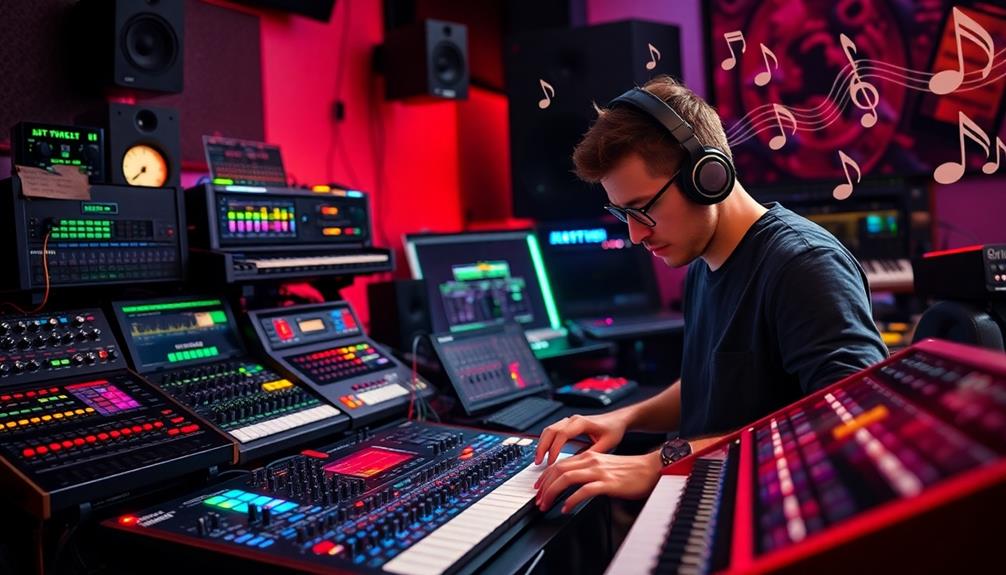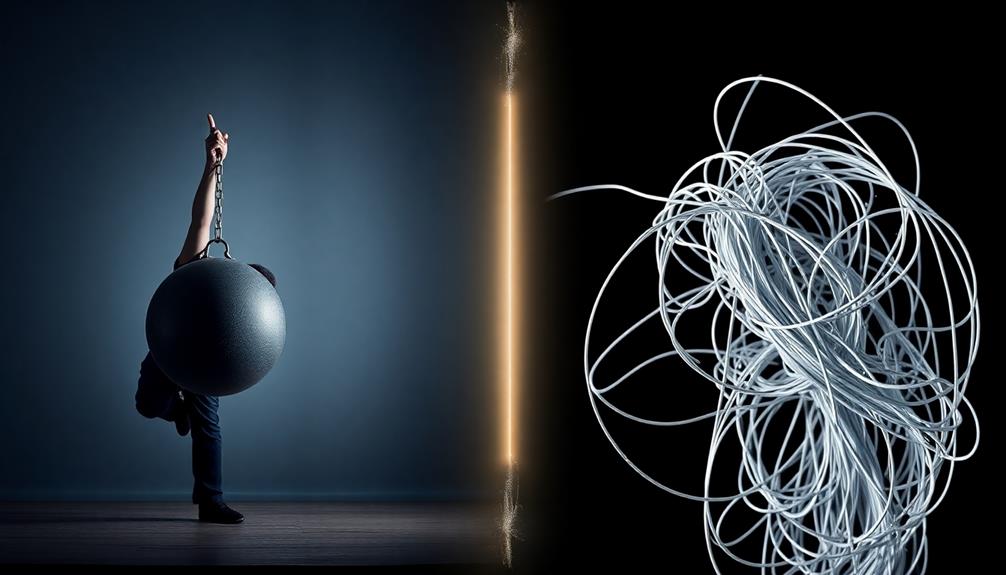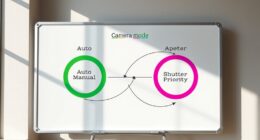Sample rate and bit depth are key to understanding digital audio quality. The sample rate measures how many times per second your audio is sampled, affecting how accurately sound nuances are captured. Bit depth determines how precisely the amplitude of each sample is recorded, influencing dynamic range and clarity. Higher settings offer better fidelity but require more space. If you want to know how these factors work together to shape sound, you’ll find more details ahead.
Key Takeaways
- Sample rate measures how many audio samples are taken per second, affecting sound detail and clarity.
- Higher sample rates capture more nuances but require more storage and processing power.
- Bit depth determines the number of amplitude levels stored, influencing dynamic range and sound fidelity.
- Increasing bit depth improves clarity and prevents distortion during loud or quiet passages.
- Both sample rate and bit depth work together to accurately reproduce sound quality in digital recordings.

Have you ever wondered how digital audio captures the richness and detail of sound? When you listen to music or podcasts on your device, it’s the result of complex processes involving digital conversion. At the heart of this process are two key factors: sample rate and bit depth. These elements determine the quality of your audio, influencing how accurately sound is represented and reproduced. Understanding them helps you appreciate why some recordings sound crisper and more lifelike than others.
Sample rate refers to how many times per second the audio signal is measured during digital conversion. Think of it as how frequently your device takes snapshots of the sound wave. The higher the sample rate, the more detailed the recording. For example, a common sample rate like 44.1 kHz means your audio is sampled 44,100 times each second. This frequency is standard for CD quality and ensures that most audible sounds are captured with high fidelity. If you increase the sample rate, you can capture even more nuances in the sound, which is especially important for professional recordings or high-definition audio. However, higher sample rates also require more storage space and processing power, so there’s a balance to strike.
Higher sample rates capture more sound details but require more storage and processing power.
Bit depth, on the other hand, defines how much information is stored about each sample. It controls the resolution of your digital audio’s amplitude, which directly impacts audio fidelity. Think of it as how precisely you can measure the loudness of each sound at every snapshot. A higher bit depth allows for a more accurate representation of the sound’s dynamic range, capturing both the quietest whispers and the loudest peaks without distortion. For example, CD audio typically uses a 16-bit depth, providing 65,536 possible amplitude levels. Professional audio often uses 24-bit depth, offering over 16 million levels, which considerably enhances the detail and clarity.
Both sample rate and bit depth play essential roles in ensuring that digital conversion retains the richness and nuance of original sound. When these parameters are set appropriately, your audio maintains its depth, warmth, and clarity, providing an experience that closely mirrors real life. Conversely, if either is too low, you might notice digital artifacts, poor audio fidelity, or a loss of subtle details. That’s why understanding how these factors work together helps you select the right settings for your recordings or playback devices. Whether you’re producing music, editing audio, or simply listening, these choices shape the quality of your sound and the authenticity of your listening experience. Additionally, the audio quality can be affected by the quality of the recording equipment used during capture.
Frequently Asked Questions
How Does Sample Rate Affect Audio Latency?
Higher sample rates reduce audio latency because they process audio data more frequently, meaning your digital delay is minimized. When you use a lower sample rate, your system takes longer to convert analog signals into digital form, increasing latency. You notice this as a delay between input and sound output. So, if you want faster response and less digital delay, increasing the sample rate helps improve real-time audio performance.
What’s the Best Bit Depth for Professional Recording?
You might think 16-bit is enough, but for professional recording, 24-bit is ideal. It offers greater dynamic range and headroom, making dither techniques and audio compression smoother. Ironically, choosing lower bit depths saves space but sacrifices quality. So, if you want pristine sound and flexibility during editing, go for 24-bit. It’s the best choice for capturing every nuance without risking unwanted noise or distortion later.
Can Higher Sample Rates Improve Audio Quality?
Higher sample rates can improve audio quality by capturing more detail in digital audio, especially during recording and editing. They allow for better preservation of high-frequency content and smoother processing with advanced recording techniques. However, the benefits are subtle and require more storage space and processing power. If you’re aiming for professional results, using a higher sample rate can be advantageous, but balance it with your system capabilities and project needs.
How Does Bit Depth Influence Noise Levels?
You might not notice it at first, but bit depth secretly controls noise levels in your recordings. Higher bit depth reduces quantization noise, giving you a cleaner, more detailed sound. It also expands the dynamic range, letting you capture both quiet whispers and loud explosions without distortion. So, if you crave pristine audio quality, increasing your bit depth is your best move—trust me, your ears will thank you.
Are There Compatibility Issues With Different Sample Rates?
Yes, there can be compatibility issues with different sample rates. You need to make certain your equipment supports the specific sample rates you’re using, as some devices or audio interfaces might only handle certain standards. Additionally, check your software support, because not all digital audio workstations or playback devices work seamlessly with all sample rates. Compatibility issues can cause playback problems or require resampling, so always verify your gear’s specifications before recording or editing.
Conclusion
So, next time you marvel at your crystal-clear music, remember it’s all thanks to those tiny settings—sample rate and bit depth. Ironically, while they’re the secret sauce behind perfect sound, most folks never think twice about them. You might not notice the difference consciously, but without them, your favorite tunes would sound like they’re coming from a tin can. Who knew? Sometimes, the tiniest details make the biggest difference—yet go completely unnoticed.









